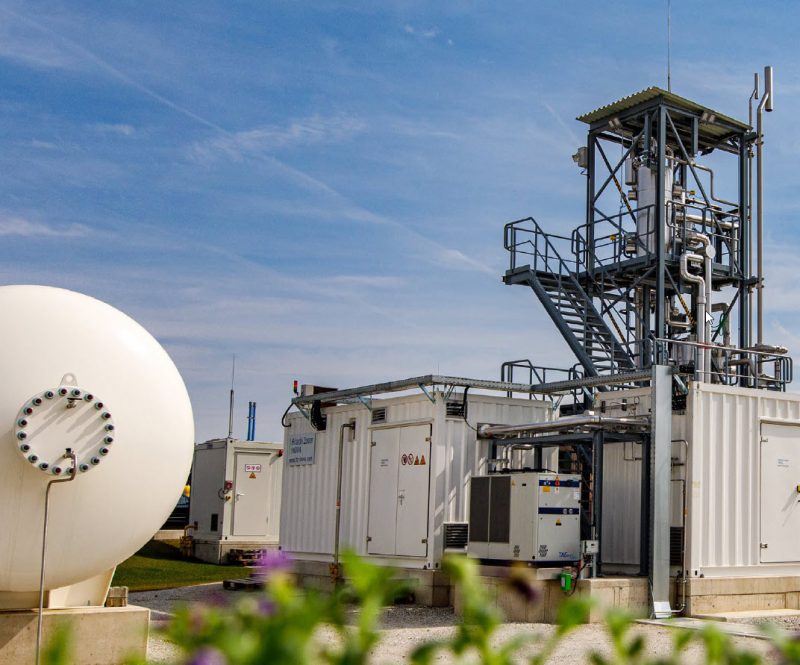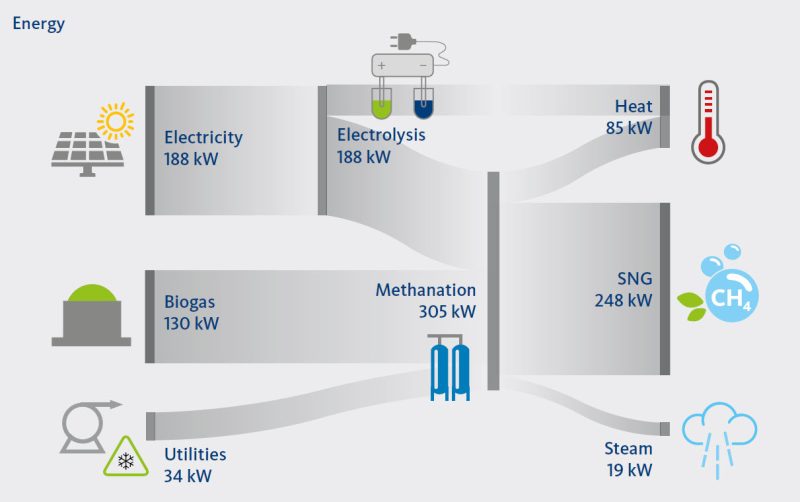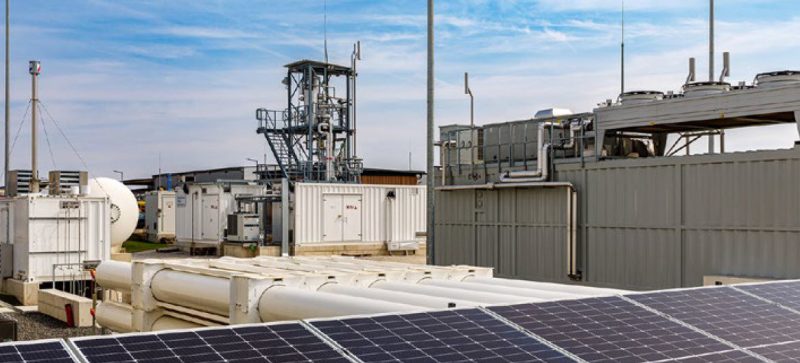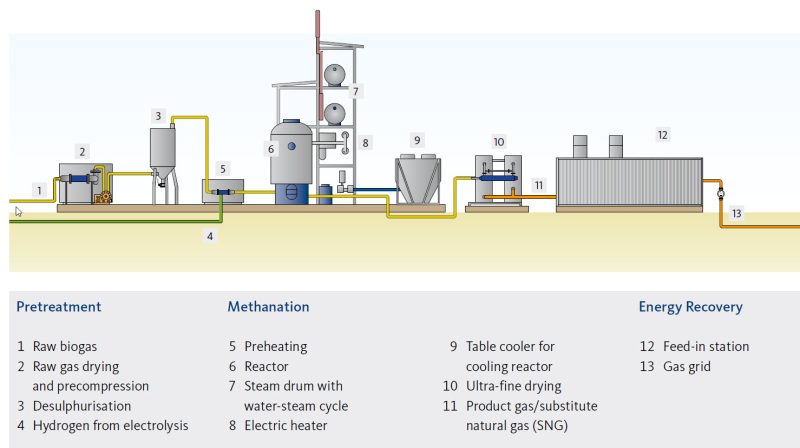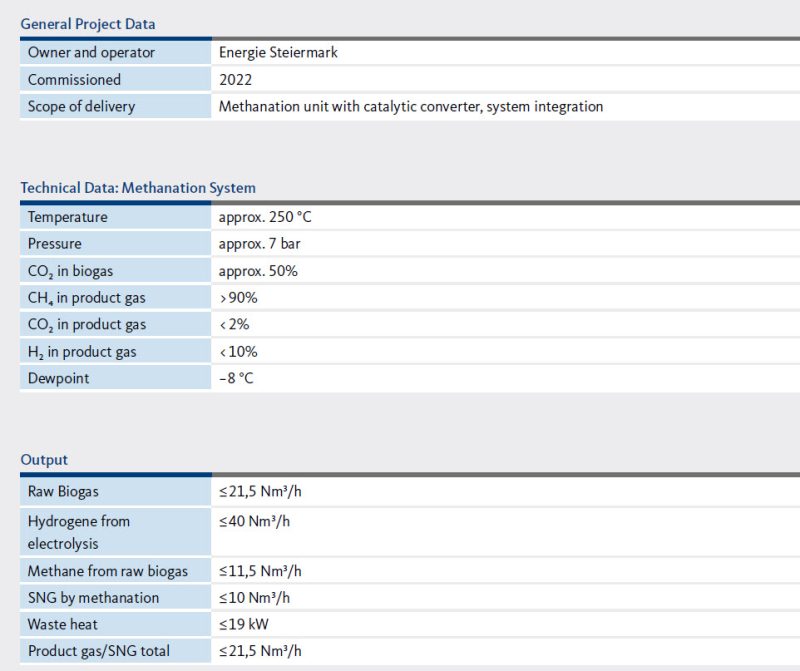Gabersdorf, Austria
Gabersdorf, Austria
Power-to-Gas Plant Supplying Sustainable Energy
Catalytic Methanation for 172,000 Nm³/a of Renewable Methane
Green Energy Resources:
from Electricity to Synthetic Methane via Hydrogen
The Renewable Gasfield project in Gabersdorf in Austria shows how power is turned into gas. What’s special about it is a holistic approach revolving around renewable energy resources: solar power is used to produce green hydrogen which together with biogas undergoes catalytic methanation to produce synthetic methane.
Aiming for Carbon Neutrality
The term “gasfield” usually refers to an underground reserve of fossil natural gas. The name of the research project in Gabersdorf, Renewable Gas Field, gives a clue as to what the project partners, led by energy services provider Energie Steiermark, are aiming for: renewable alternatives to finite sources of energy. The project demonstrates ways of transforming Austria’s energy system on a carbon-neutral basis by taking proven renewable energy technologies and combining them efficiently taking local circumstances into account. An important component of the project is catalytic methanation technology from Kanadevia Inova, which in Gabersdorf is being used for the first time to treat raw biogas.
Load-flexible Energy Conversion
The Renewable Gasfield (RG) project is made up of various process steps. The starting point was an existing wet digestion biogas plant using biogenic residues to produce raw gas for the generation of electricity and heat in a combined heat and power plant.
In 2021/22 the site was expanded to accommodate the RG initiative, with the existing plant integrated into the project.
A photovoltaic system was added to generate renewable electricity; as an alternative to solar energy, wind or hydropower can also be generated. An electrolysis system was also set up, using green power to split water into its components, hydrogen and oxygen. While the oxygen is released into the environment, the hydrogen is used together with the raw gas from the biogas plant in methanation, the final step in the process.
After precleaning, the raw gas consists mainly of methane and carbon dioxide (CO₂). This is usually separated from the methane in a gas upgrading system to produce biomethane. In this project, however, the CO₂ is not separated, but reacts with the green hydrogen in the methanation unit to form synthetic methane (SNG; synthetic or substitute natural gas). This is fed into the gas grid in compliance with the relevant regulations and replaces fossil natural gas.
Catalytic Methanation of Raw Biogas
The plant in Gabersdorf is a pioneering project, as raw gas is used for catalaytic methanation, the first time it’s been done on this scale anywhere in the world. This maximises the methane yield from the biogas produced as well as offering a new option for methanation, which is done with pure CO₂ and hydrogen. The core of the methanation system developed and constructed by Kanadevia Inova is a reactor unit with a catalytic converter that operates at a particularly high conversion rate. The special design of the reactor allows good temperature control, which enables long-lasting operation of the catalytic converter.
High overall efficiency can be achieved by extracting high-pressure steam. The Gabersdorf facility’s methanation system can be operated flexibly and continuously, generating up to 21 Nm³/h of product gas that can be fed into the grid. That’s enough to cover the average annual heating requirements of around 60 four-person households. In principle the technology is scalable and therefore has potential when it comes to producing larger quantities of methane.
The Key Role of Green in the Future Energy Supply
Biomethane, SNG and hydrogen will play a pivotal role in the energy systems of the future as alternatives to natural gas, a finite energy source and an efficient means of decarbonisation. The Gabersdorf project shows the potential for maximising methane yield and using CO₂ highly efficiently rather than releasing it as a by-product, as it is in so many cases. It also impressively demonstrates what can be achieved by intelligently linking sustainable energy generation technologies.
